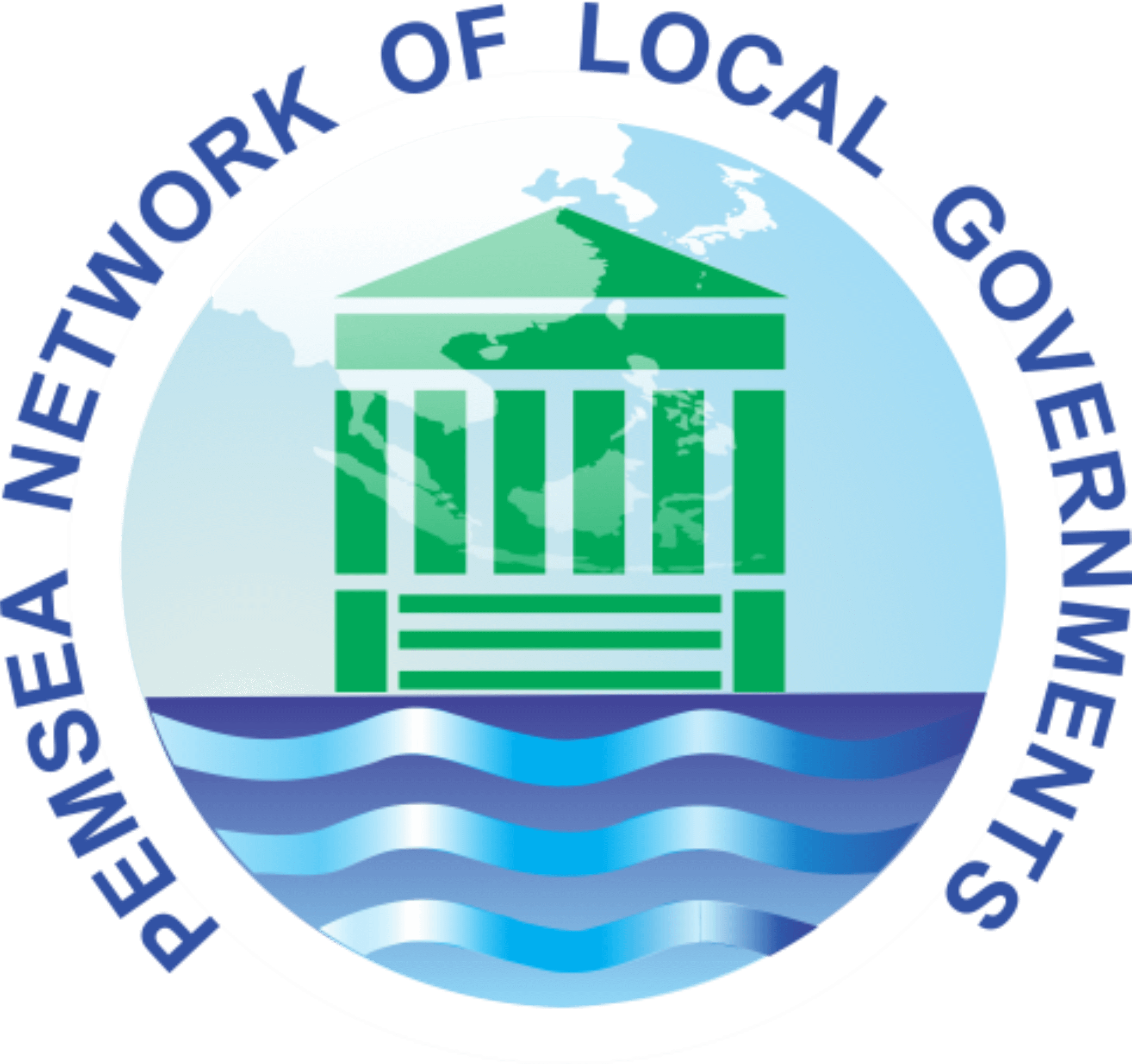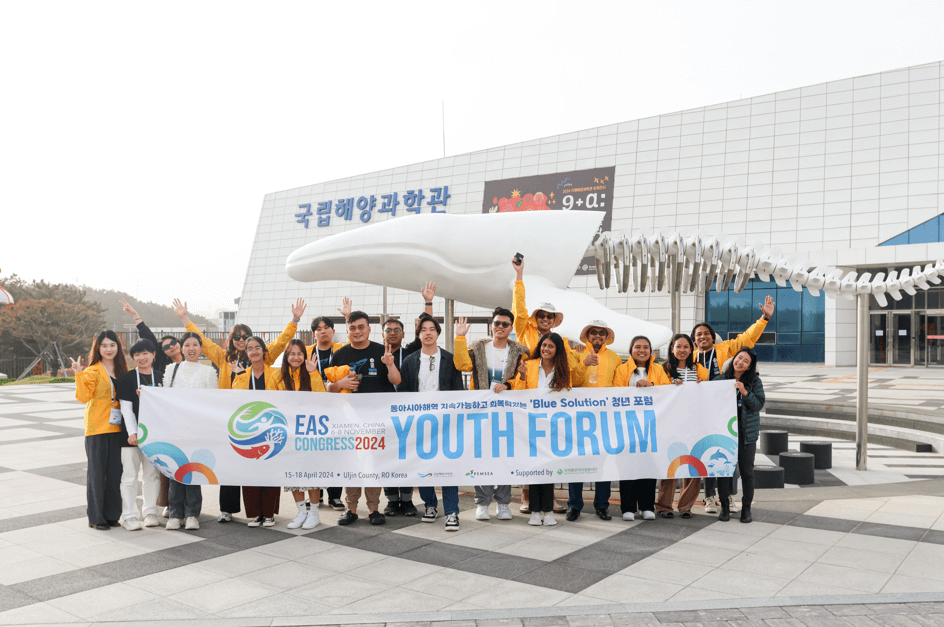PNLG Annual Forum 2022: Developments in the seas of East Asia
Thursday, 27 October 2022

The PEMSEA Network of Local Governments (PNLG) Annual Forum 2022 is taking place in Tangerang Regency, Indonesia. This saw the induction of new members, updates on strategic plans, and shared stories of progress. We have summarized some of those stories below!
Lessons from ICM implementation in Indonesia
Integrated Coastal Management (ICM) has become widely practiced in Indonesia, and embedded into lots of policies at different levels of government. Some successes include the Gerbang Mapan Programme planting 720,000 mangroves, and 42 coral reef restoration sites being established from 2015 to 2022. This wide usage has led to great understanding of ICM processes, and from these some learnings were shared about how to make ICM work.
First of all, it was reinforced that policies do not lead directly to implementation. Indonesia has embedded ICM into national level policy. This is important, but not the whole task. Practical examples remain relatively limited, showing further steps are needed to transform national policy into local action.
- When local actions are undertaken, there are a number of factors that are essential to their success.
- There needs to be an awareness of ICM among decision makers and among local communities.
- Communication is needed to overcome the perception among decision makers that ICM is overly complicated.
- ICM should be embedded into long-term institutional thinking, so it can persist through different political terms.
- There needs to be cooperation between different sectors involved in the coastal and marine area.
- Indicators used to measure government success need to be expanded beyond basic economic and GDP-related ones, to capture a holistic view of changes.
There needs to be effective monitoring and enforcement of implemented policies.
Successful role models of ICM implementation is key, and so more examples should be developed and shared. Alongside this, making the ICM Cycle Process simpler, easier, and quicker may help with adoption. This goes along with an increase of awareness of ICM, and therefore in trust at its advantages when compared to siloed sectoral thinking, among both decision makers and other stakeholders. Creating more trust also means showing success, which requires a range of indicators such as those suggested in the State of Coasts reporting system. Success also requires monitoring and enforcement. Lastly, international cooperation can be very useful for implementing ICM, both in initial adoption and in seeking to iterate on success.
Blue Finance in Indonesia
The concept of Blue Finance has become more familiar and widespread over past years. Indonesia has begun to integrate Blue Finance into its planning by including it as an aspect of the Blue Economy Strategy. The Blue Economy is at the heart of Indonesia's marine spatial planning, underlying all related objectives and goals.
Marine spatial planning is used to integrate ecological, societal, and economic goals, creating an integrated and sustainable use of marine space. Indonesia is doing this at multiple levels. A national marine spatial plan works at a scale of 1:1,000,000. The 20 inter-regional zoning plans, which cover specific seas, straights, and bays, work at a scale of 1:500.000. The rest of the 160 marine spatial plans are at provincial (34 provincial plans exist) and smaller levels, often at scales of 1:250,000 or 1:50,000.
Many Blue Finance instruments have been proposed for use. These include blue finance linked bonds, supporting sustainable investment, blue finance insurance mechanisms, and debt for nature improvement swaps. A Blue Financing Strategic Document has been produced exploring these options.
Seasonal fisheries closure in Batangas, Philippines
Closing fisheries during critical breeding periods allows fish stocks to recover and to be maintained at a higher stable level, greatly benefiting both the ecosystem and local communities dependent on a stable fish stock. This is part of an Ecosystem Approach to Fisheries Management (EAFM), which has become more widespread in the Philippines.
Whereas early seasonal closure initiatives were headed by the national government, in Batangas a fish closure initiative in Balayan bay saw the first implementation by a local government. Balayan bay contributes 86% of the province's fish catch, and so is a vital resource for communities in the province.
The project began in 2011, when initial focus group discussions were started with commercial fishers. A scientific study on its possibilities was released in 2012, and including in consultations over the next few years. These consultations expanded to bring together local government, relevant national government bodies, fisherfolk, scientists, and the local communities. The aim of EAFM is to bring together society, policy, and science.
Once the seasonal closure become fully implemented, the impact was tracked. Fish populations in the bay have increased, including an increase in mature fish. Surveys find strong commitment among local fishermen, who obtain some financial assistance during the closed season. Support also remains strong in local government, with the scheme set to continue.
SDG as a development framework
As part of the Indonesia Vision 2045, the Indonesian government has with the theme "Build Forward Better" integrated the UN SDGs into its plans for economic development. This is part of an ambition for the country to become a developed nation in a sustainable manner. By 2030 economic growth is intended to be inclusive across society and the country.
To track progress, a database of more than 241 indicators has been developed to get a comprehensive picture of the impacts of development. This is tracked across the country, and the government is seeking collaboration on development with non-government groups, to align goals between different actors.
SDG Centers have been established in universities, where various projects can be established with other stakeholders to address one of more of the SDGs. Some examples have gone into practice, supporting sustainability in agriculture and fisheries. A project in Jambi Province saw the national government partner with charities, finance, and international assistance to create a micro hydro power plant for four remote villages of almost 4,500 people.
Holistic and low-cost monitoring systems at country levels
Monitoring landscape change can be difficult, but it is essential to assessing the impact of ongoing projects. One area where monitoring can make a huge difference is in blue carbon. The coral triangle area with its huge biodiversity should be a carbon sink, however due to ecosystem degradation some areas are actually on balance releasing carbon into the atmosphere. Thus ecosystem health in the region has global consequences.
The BlueCARES trilateral project between Japan, Indonesia, and the Philippines runs from April 2017 to March 2023, under the SATREPS Program by the Japan Science and Technology Agency (JST) and JICA. It aims to establish a Blue Carbon Strategy as an effective scheme for enhancing local efforts to conserve blue carbon ecosystems and preserve their resilience.
Monitoring is done through setting up a core and network system to bring together different aspects of monitoring. To assess change, an integrated multi-scale model is taken up which combines blue carbon dynamics, watershed dynamics, and coastal and ocean dynamics. Models are also integrated spatially, with small-scale observations being integrated into national models, and the national models of Indonesia, Malaysia, and the Philippines being integrated into an overall regional model.
Satellite monitoring can detect local impacts. For example, the Bakhawan Eco-Park on Panay, near the mouth of the Aklan River, has seen a substantial increase in mangrove forest since 1985. This conversion of sandy shores to mangrove forests has had impacts along the coastline, with sediment trapped in the river instead of travelling down the coast. Sediment flow has also been seen to be affected by forest changes upstream. Thus, the monitoring helped show the need for integrated management. Ground-based monitoring adds to this, allowing for validation of satellite mapping along with new information. BlueCARES uses a citizen science approach to ensure local communities are involved, which adds to the overall effectiveness of the project.
Water resource conservation in Selangor, Malaysia
Local governments along the coast of Selangor implement holistic management systems for their coastlines, with the state being the only one to implement Integrated Coastal Management (ICM). This ICM takes place along a coastal zone which extends up to 5km inland as well as some distance into the ocean offshore. This zone faces several challenges, including rapid urbanization, industrial development, coastal erosion and climate change, flooding, water pollution, and water security.
Alongside ICM, Selangor implements Integrated River Basin Management (IRBM) along the main Klang river. It aims to ensure sufficient water is available, that water is clean, that flood protection is in place, and that the environment is protected. The Selangor Maritime Gateway Project is set up to improve the environmental health of the river. A rubbish collector has been installed at the river mouth to collect riverine debris.
ICM and IRBM work together to create a holistic approach. Under this joint planning an Integrated Coastal Use Zoning Plan (ICUZP) has been created, as well as an Integrated Risk Zone Management area. Mangrove forests have been rehabilitated along the coasts. A 20c plastic bag charge has been implemented to reduce waste. Stakeholder participation is encouraged, and community empowerment is a key part of the process. Some efforts such as beach cleaning and mangrove replanting explicitly reach out to the public, seeking community participation.




